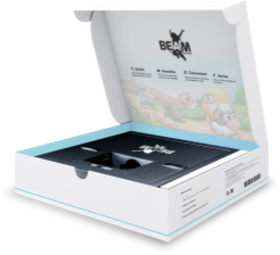Yair Ariel • April-4-2017
2016 took fast food aficionados for a spin. The year was tumultuous. From servings of algae as exotic additions to the menu to the “sprouting” of whole foods, the shift was from values like speed and convenience to themes like sustainable dining. If you are in the Quick Service Restaurant (QSR) industry, it is important for you to take stock of the changes that will affect your consumer base and the market in general.

Quick service restaurant trends
Now is a great time to get on the brand revamp bandwagon because most of your competitors are likely to join in as well. If you try to plough through the healthy food consciousness that your patrons are developing with your early 2000s menu, you may have to scramble later down the line as your profits plummet and “fast food” goes out of fashion.
The purpose of this report is to break down the five most disruptive trends that have the potential to boost your revenue if taken seriously or affect your footfall if ignored.
Trend #1: The Vegetable Dominance in Menus
Ground beef burgers will not disappear any time soon. They are likely to remain a classic. But it is essential that Quick Service Restaurants review what they have to offer and make room for vegetarian and vegan options for eaters who are embracing the “meat free” lifestyle.
In 2007 the US raised and processed 9.5 billion land animals for food. Fast forward to 2016 and the number has dipped by 400 million. As the Millennials come into their own and make healthful lifestyle choices, the demand for meat is quickly waning. In fact the trend is prominent enough to put the NASDAQ on alert!
So every Quick Service Restaurant should sit up and pay attention too.
Moreover Food Navigator suggests that veganism is gaining momentum all across the country. Many eateries and restaurants have already incorporated a special vegan selection as part of their menu.
Taking these factors into consideration, vegetables are ruling the roost. From the inclusion of papaya and kale in traditional Quick Service Restaurant dishes like slaw to the use of zucchini, beet and sweet potato strips to mimic strands of pasta, innovation is at its peak in a bid to add variety and substance to what’s available.
Most importantly, a healthy helping of dressing free “salads and veggies” is going to become an expected part of every Quick Service Restaurant’s meal.

Quick service restaurant international cuisine
Trend #2: The International Cuisine Explosion
Mexican staples like tacos and nachos with generous helpings of smooth guacamole were manna from heaven three years ago. Jaded palates lined up for the spicy, lemony kick of delectable imports from across the border.
But the finicky buyers have moved on.
It is time to tap the far East for culinary inspiration and Quick Service Restaurant worthy dishes that will impress and satisfy the famed American hunger.
2017 will call restaurants and fast food to make room for dumplings, meat samosas and a myriad chutneys to tantalize taste buds.
It is more than just a fad that will disappear with time. This interest in international grub will sustain well into 2020. Any investments made to capitalize early on the opportunity will yield high ROI.
ShopHouse Southeast Asian Kitchen and Chutney Joe are two establishments that are already serving large chunks of sophisticated consumers who have steered clear of the Quick Service Restaurant niche because of unimaginative menus and poor quality of produce used.
Even if it is not a financially viable idea to start a separate chain that caters to gourmet globetrotters, you can test buyer response by introducing a weekly menu of international options available only on a particular day.
Trend #3: The Experience Economy
This is by far the most disruptive trend because it doesn’t involve tangible elements like dough and meat. Yet it has a profound impact on how consumers perceive your business.
When people are asked to describe your brand, what adjectives do they use? Are they open to terming you healthy and wholesome? Are they likely to label you exciting? Or do they shrug their shoulders and assign attributes like fast, cheap and easy?
Experts predict that the FOMO (Fear of Missing Out) phobia that has younger Americans in its grip pushes them to experiment with food, beverages and even newer experiences. Clients are looking for two things when they pay money to a brand – any brand and they are:
- Class
- Novelty
So your consumer base is expecting you to ditch the self serve and bench approach to go in for more exciting decor elements that spice up their dining. They do not wish to sit patiently as children cry around the room. They don’t want to constantly supervise their own kids by neglecting the finer nuances of the taste, smell and texture of their ordered dishes. In short, they want to remember they ate at your place and they want to have something to talk about on social media.
More and more Quick Service Restaurants are turning to themes and addition of amusement corners for children to tick these check boxes. Virtual Reality (VR) is playing a significant role in bringing these qualities to dining experiences without busting restaurant budgets.
La Petit Chef is a short augmented reality content piece that restaurants use to delight customers by having a tiny virtual chef prepare their dessert right on the table.
SubliMotion in Ibiza has taken the use of VR to the next level with immersive surround technology.
Quick Service Restaurants don’t need to be elaborate in their use of Virtual Reality, but they can give the concept a spin with the help of VR game corners for kids.
Trend #4: Juicy “Juice” Revolution
It’s not like the juice industry is a new market entrant in the US. The cumulative value of the juice and smoothie space stands at 23 billion dollars.
But there are two important, game-changing shifts that are pertinent for the Quick Service Restaurant industry.
- People are eschewing the consumption of juices with artificial sweeteners and preservatives. They no longer trust what comes packaged in a bottle. Off trade volumes have declined by 4% in 2015 and 2016.
- In direct contrast, people are ready to pay up to $8 for a 16 ounce glass of the fresh variant. Starbucks’ Evolution Fresh is an example of this trend.
From these observations, it is easy to conclude that Quick Service Restaurants can take their menu to the next level with the inclusion of fresh juices that strike a chord with increasingly health conscious consumers.
Varied and custom juice options boasting exotic fruits like lychee, mango and passion fruit are likely to do very well.
It is worth the time and effort to install a juice bar that complements the main theme of the joint.
Trend #5: Convenient Service
Your clients no longer view the tag “fast food” favorably. But give them their food “faster” and they will not complain.
While you move away from unhealthy fried and preservative stuffed off the counter dining options in a bid to be greener and healthier, it is essential that you allow buyers to take charge of their Quick Service Restaurant experience.
Ogilvy and Mathers has pegged 2017 as the year of Chat Bots. So QSR brands will also join the fun with bots of their own. These intelligent helpers will literally “talk” to customers through their favorite messaging app, help them book a table and even convey their menu choices beforehand so that the time you spend creating items from scratch is offset by the head start you get.
Kiosk only Quick Service joints will also become more popular. People are adept at conversing with interfaces and they will in fact embrace ordering through a touch screen with enthusiasm. With the new Department of Labor rules about overtime, kiosks are one of the most effective changes that restaurants can make to streamline the order placement and delivery process.
Conclusion
Should a Quick Service Restaurant adopt all the recommendations in this report? It is highly unlikely that a year will be adequate time to reflect on the trends and implement the suggestions. But joints must at least be aware of how their buyer preferences are changing so that they initiate projects that can make them future ready.
With these insights every Quick Service Restaurant can understand why their order values or footfall is changing. They can take steps to eliminate the bottlenecks and better support progressive practices.
About BEAM
BEAM interactive projector game system by EyeClick is the future of VR and augmented reality. It is an award winning, no mess, innovative projection game system that engages children in Quick Service Restaurants through tailored games. BEAM helps brands provide a top-notch, no distraction dining experience to patrons and also encourages children to indulge in physical activities to work up a healthy appetite. To know more about the brand and the solution, contact 914-219-0279.







